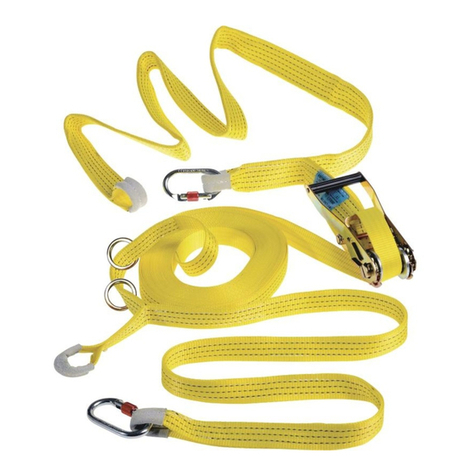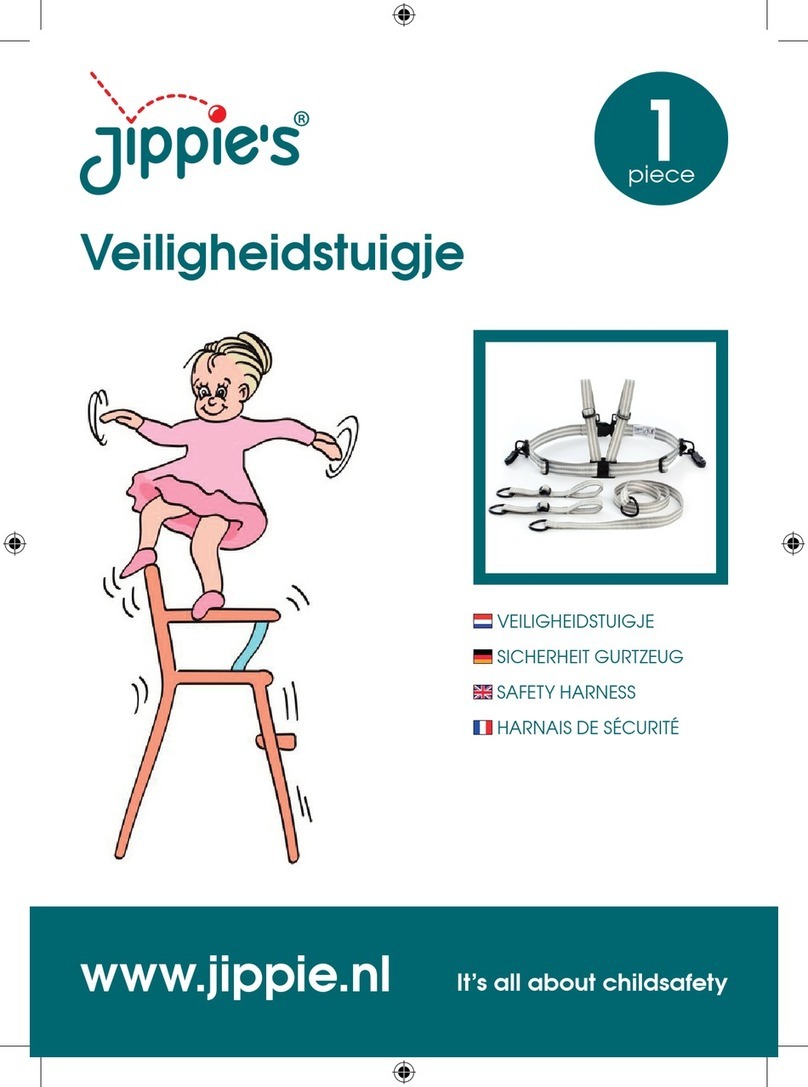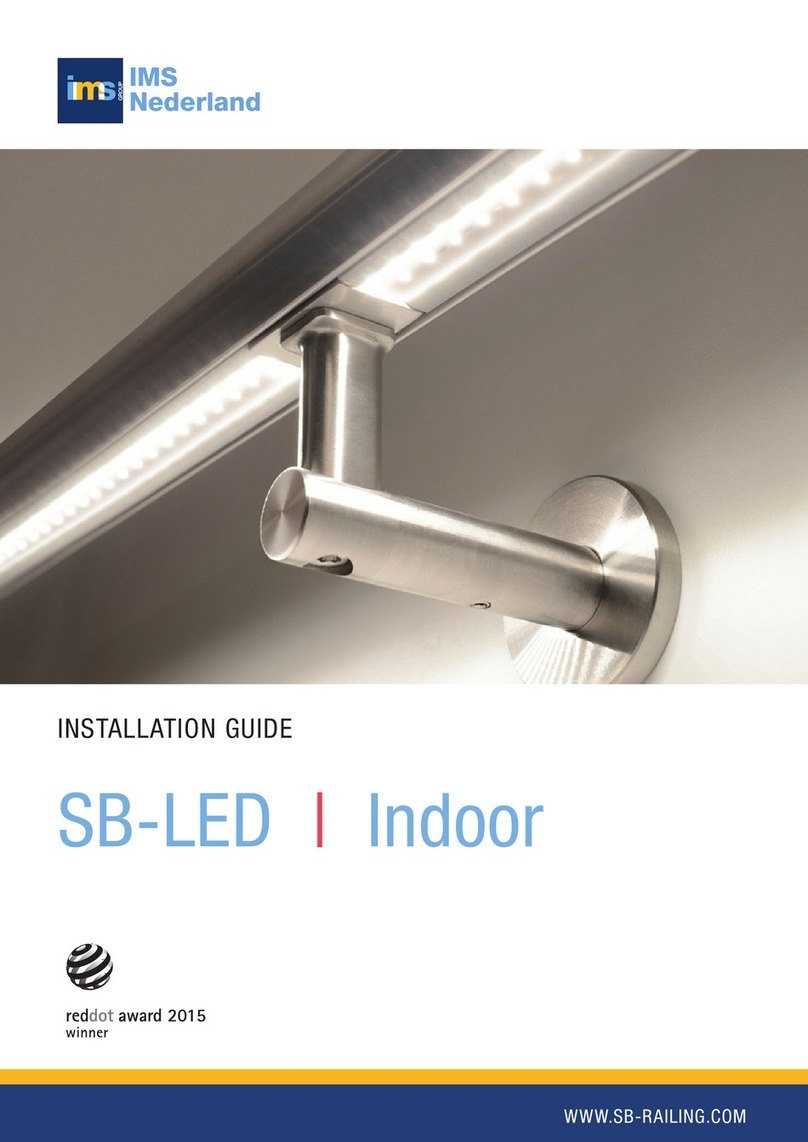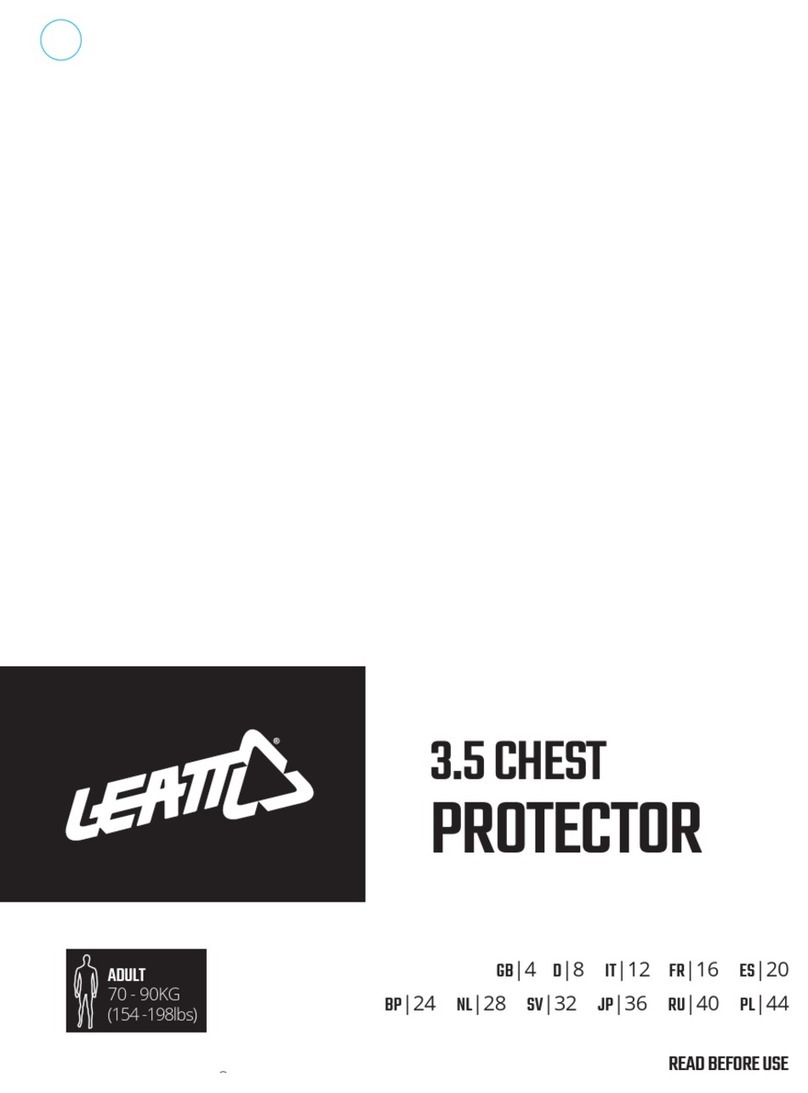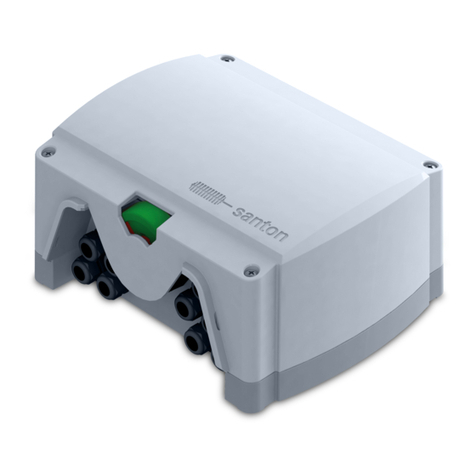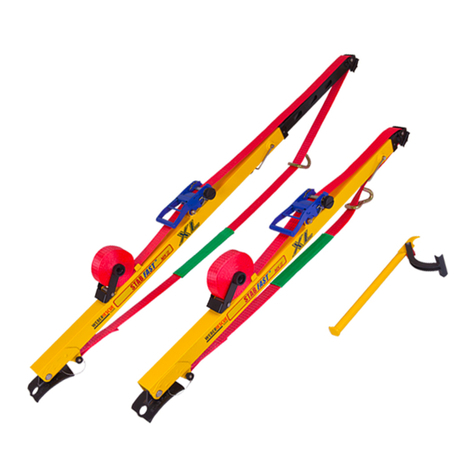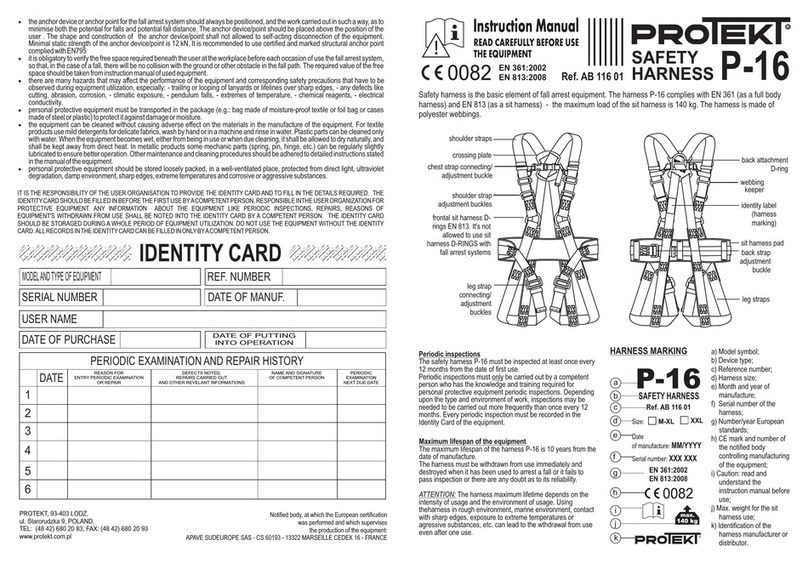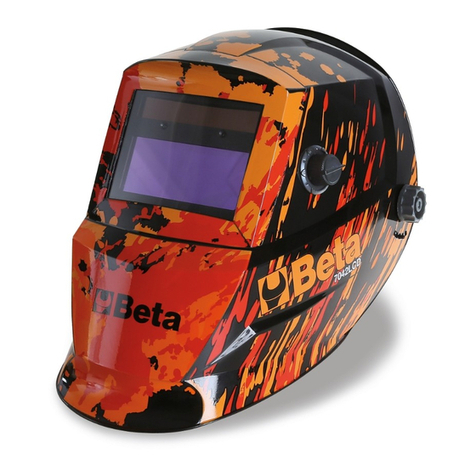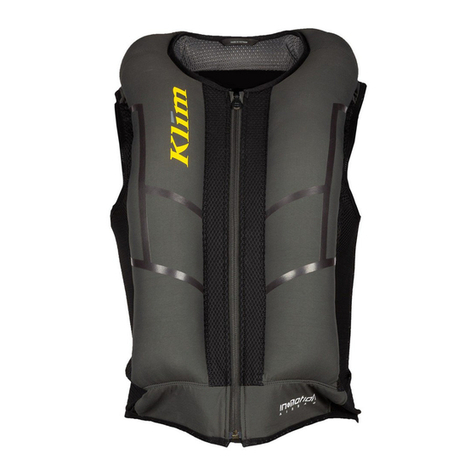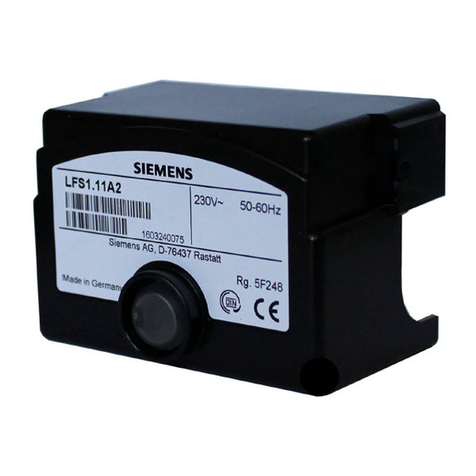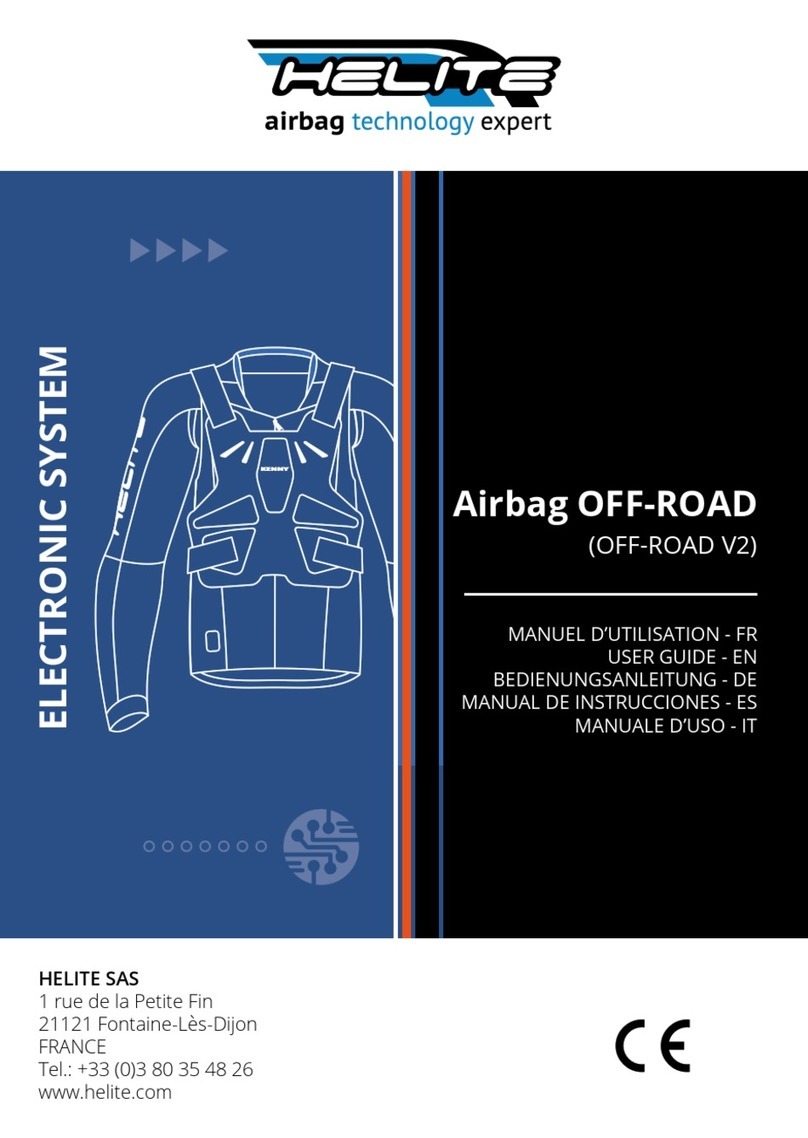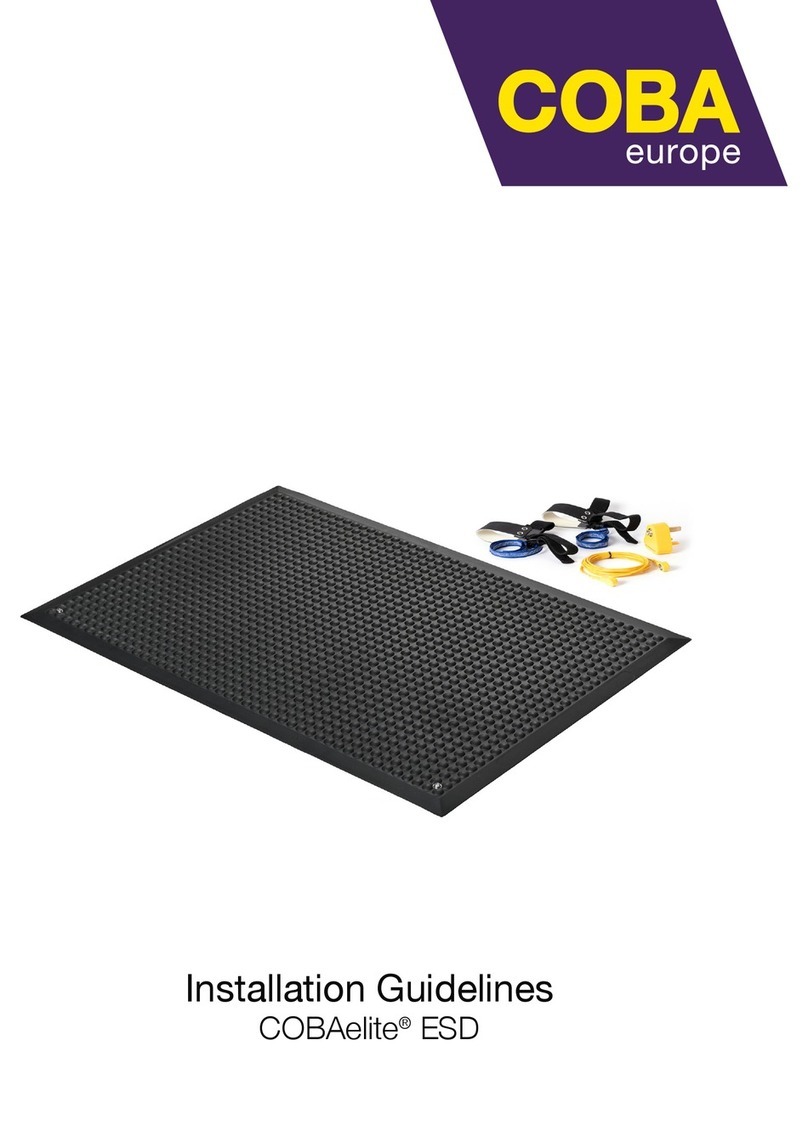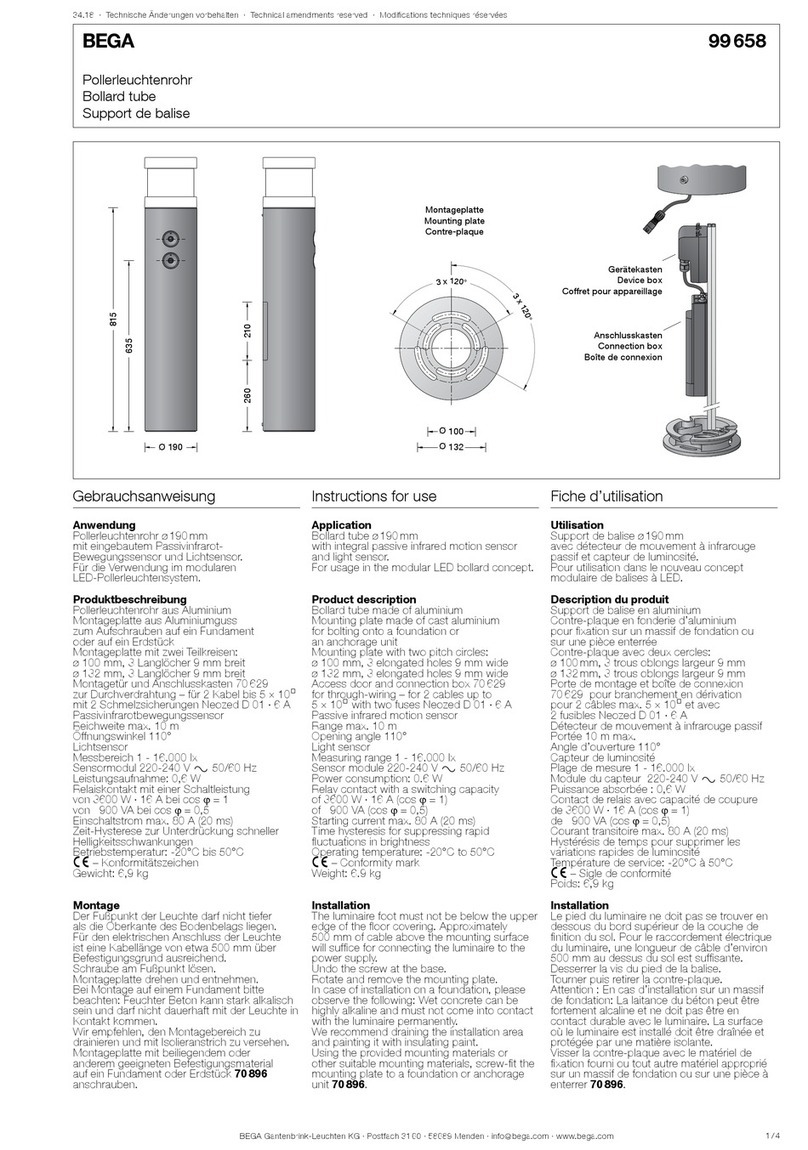TSG Trailfox User manual

ENGLISH
ENGLISH – 1
OWNER’S MANUAL
SKATE/BIKE/WAKE HELMET

Supporting the sport is our obsession. Protecting the rider our top
priority. Looking for innovation and leadership our passion. Since 1988
we create the perfect gear for our riding experience - and for yours.
ridetsg.com
DESIGNED IN SWITZERLAND // MADE IN CHINA
Models covered by this information:
Trailfox, Trailfox Mips, Substance 3.0, Seek, Meta, Status, Superlight,
Kraken, Evolution, Recon, Skate/BMX, Dawn, Dawn Flex, Evolution Wmn,
Cadete, Evolution Youth
Standards: EN1078, CPSC
Ivy, Nipper Maxi, Nipper Mini
Standards: GS (Tested Safety), EN1078, CPSC
Dawn Wake
Standard: EN 1385
GS Certification tested by:
TÜV SÜD Product Service GmbH
Ridlerstraße 65
80339 München
Notified Body No: 0123
EC Type examination tested by:
Critt Sport Loisirs
Zone du Sanital
21 Rue Albert Einstein
F-86100 Chatellerault
Notified Body No: 0501
CPSC examination tested by:
Southern Impact Research
Center, LLC
304 Dunavant Drive
Rockford, TN 37853, USA
A2LA Certificate No: 1412.01

CONTENT
CONTENT
ENGLISH 5
DEUTSCH 11
ESPAÑOL 19
FRANÇAIS 27
ITALIANO 35
NEDERLANDS 41
ČESKY 49
SLOVAK 55
MAGYAR 61
POLSKI 69
TÜRKÇE 75
РУССКИЙ 81
한국어 89
HELMET SIZING CHART 95


ENGLISH
ENGLISH – 5
HELMET MANUAL
Thank you. You have chosen a TSG safety product designed especially for ac-
tion sport athletes and urban bikers. Please read the following information care-
fully. Correctly used and cared for, it will keep you better protected and satised.
TESTING AND APPROVAL
TSG helmets have been tested against the manufacturer’s specications
and EC Type-Examination certication has been issued by the test labora-
tory mentioned on page 2.
Until 20.04.2018: The helmets are CE marked to denote compliance with the
EU Personal Protective Equipment Directive 89/686/EEC.
From 21.04.2018: The helmets are CE marked to denote compliance with the
Personal Protective Equipment Regulation (EU) 2016/425.
One or more of the following European and North American Standards have
been used in the evaluation of this product:
- EN 1078. Helmets for pedal cyclists and for users of skateboards and
roller skates
- EN 1385. Helmets for canoeing and white water sports
- GS (Geprüfte Sicherheit/Tested Safety)
- CPSC: Standard safety requirements of the Consumer Product Safety
Commission. Complies with CPSC Safety Standard for Bicycle Helmets for
Adults and Children Age 5 and older.
There must be a clearly visible marking on every approved helmet and this
may not be removed.
Find the ofcial EU declaration of conformity for each model on our website:
ridetsg.com.
USE
Helmets conform to EN 1078:
Helmet for pedal cyclists and for users of skateboards and roller skates. For
use in non-motorized recreational sports only.
Helmets conform to EN 1385:
Helmets for canoeing and white water sports, such as wakeboarding and
kitesurng. They are not intended for use in white waters of classes 5 and 6,
as dened by the International Union of Canoeing.

6 – ENGLISH
ENGLISH
WARNING
This helmet should not be used by children while climbing or doing other activi-
ties when there is a risk of strangulation/hanging if the child gets trapped with the
helmet. It is important that the helmet ts your head properly and that it is correct-
ly buckled. While no helmet can prevent all head injuries, use of a helmet, taking
lessons, riding responsibly and within your abilities, and common sense, can
together signicantly reduce the risk of catastrophic head injury and death. How-
ever, accidents, serious injuries or death can occur even if the helmet is properly
used. TSG makes no claim that this helmet will eliminate all possibilities of injury.
This helmet is designed to absorb shock by partial destruction of the energy ab-
sorbing liner. This damage may not be visible to the user. Therefore, if subjected
to a severe impact or blow, the helmet should be destroyed and replaced even if
it appears undamaged. A helmet can only provide a level of protection for areas
that it covers. It does not protect your neck. Do not make any attachments to this
helmet, other than those recommended by the manufacturer. Doing so voids all
warranties and affect the helmet’s performance. The helmet may be damaged by
paints, solvent, bleaches or strong detergents, sometimes invisibly.
For use in non-motorized recreational sports such as pedal cycling, skate-
boarding and roller skating only.
CLEANING
Wipe only with a soft damp cloth in gentle soap or mild detergent in cold
water, rinse by wiping with a soft cloth damped in cold water and dry with a
soft cloth. Comfort padding can be removed and hand washed and air dried.
Common substances applied to this product (solvent, cleaners, hair tonics,
paint, adhesives etc.) can cause damage that may be invisible to the user
and compromise the effectiveness/safety of your TSG helmet.
STORAGE AND TRANSPORTATION
Do not expose your helmet to impact or external force during transport. Store
it in a dry place away from any source of heat like a hot radiator or sunshine
through a car window. If your helmet melts it is not covered by our warranty.
MAINTENANCE AND OBSOLESCENCE
For maximum performance, your TSG product must be inspected prior to
each use. Stop using the helmet if any components show signs of damage
or are worn, cracked, and/or deformed, or if the inside foam has deteriorated.
Helmets have a limited life span in use and should be replaced every three
(3) years under normal use conditions, but at the latest after 5 years from
date of manufacture (see product label). If you know or suspect that your
helmet has been damaged or exposed to any abnormal force, return the

ENGLISH
ENGLISH – 7
product to the seller for inspection or destroy and replace it. Please dispose
of it in an environmentally-friendly manner. Do not make any modications
to the helmet, this includes the outer shell, the inner EPS liner or chin strap,
any modications will void all warranties and affect the helmet’s performance.
FITTING INSTRUCTIONS
To attain maximum protection and comfort, choose the correct helmet size.
It should sit rmly without pressing or chang. It is important that the helmet
can neither ride up your forehead nor be pushed down over your eyes.
PLEASE CONSIDER THE FOLLOWING GUIDELINES FOR A
PROPER FIT OF THE HELMET.
1. Put on the helmet in a manner so that it sits straight on your head and covers
your forehead, without blocking your vision. The helmet should t comfortably; so
that it holds onto your head as you move it front and back, as well as side-to-side.
2. The comfort pads inside the helmet should exert rm, even, but comfort-
able pressure against your head. The helmet ts well if the pads are in con-
tact with all sides of your head around the helmets interior. A helmet that ts
well also ts comfortably without being too tight.
3. When you are satised with the t, tighten the chin strap so it ts snug and
make sure the buckle locks securely and that the straps do not slip. If your
straps aren’t adjusted right, your helmet won’t stay on properly. The loose
ends of the strap must loop back up through the rubber „0“ ring.
4. To adjust the position of the straps, hold one end of the chin buckle in one
hand and slide the adjuster up or down the strap as necessary, to create a
balanced and even „Y“ shape underneath the ears. Position the buckle away
from your jaw bone. It should not be possible to remove the helmet without
opening the chin strap. If you can roll the helmet off in front or back, or roll it
so it blocks your vision or exposes your forehead, it does not t correctly and
should be re-adjusted.
CORRECT
INCORRECT
Blocked
Vision
INCORRECT
Exposed
Forehead

8 – ENGLISH
ENGLISH
HOWTOCUSTOMIZEYOURFIT
Our Tuned Fit System allows you to dial in your t using different thickness
comfort pads on the interior of the helmet. Your helmet comes with two sizes
of comfort pads. Carefully separate the Velcro strips at room temperature to
remove the pads on the inside of the helmet and swap them for the thickness
you need. Your helmet package contains spare fastening points in case one
of the Velcro fastening points becomes detached. If the helmet still does not
t after having adjusted it with the pads, choose another size. Comfort pads
can be purchased separately in all the various sizes.
HELMETS WITH FLEXTECH INNER-SHELL
If you have purchased a TSG helmet with FlexTech Technology, you will note
the inner shell of your helmet consists of several EPS foam segments which
are connected with a strong nylon webbing tape. These individual segments
are slightly adjustable and therefore adapt perfectly to your head shape. Our
FlexTech Technology increases comfort, whilst completely fullling all legal
norms regarding design and impact protection.
HELMETS WITH DIAL-FIT SYSTEM
If you have purchased a TSG helmet with Dial-Fit System, you can size adjust
your helmet by dial. To tighten the dial, turn it clockwise to a comfortable t. To
loosen, turn the dial counterclockwise. The t should be snug, but not uncomfort-
ably tight. Be sure to check the adjustment of your helmet before each ride. The
Dial Fit System is designed to enhance the t and stability of your helmet. It is not
a replacement for your helmet’s straps. Do not attempt to remove the t system
from your helmet; doing so will void all of the helmet’s warranties.
MIPS®
If your helmet is equipped with MIPS® you prot from a unique technology
developed to reduce brain injuries caused by rotational impacts to the head.
Learn more about MIPS by reading the MIPS brochure enclosed in your hel-
met box or visit: http://mipsprotection.com.
HELMETS WITH REMOVABLE VISOR
SCREWED VISORS
If your helmet visor comes with side screws, open the screws on the visor,
then move the visor into the desired position and close the screws thoroughly.
SNAP-FIT VISORS
Carefully pull the ends of the visor loose from the helmet and then lift away
from the helmet. If your visor is xed to the helmet with the help of single pins,

ENGLISH
ENGLISH – 9
use a non-sharp screwdriver (between pin and visor) to carefully remove the
pins at the ends of the visor and lift the visor away from the helmet.
To replace the visor, center it on the helmet, position the middle pins (if pro-
vided) into the holes and then snap the pins on the side of the visor into the
holes in the helmet (Fig. 1).
Depending on the model your visor offers 3 degrees of vertical angle adjust-
ment; simply tilt the visor up or down to the desired position (Fig. 2). Some
models don’t feature adjustable visors.
Caution: DO NOT try to remove the visor by pulling forward on the centre.
This will damage the helmet and the visor.
HELMETS WITH LED LIGHT
To remove the LED light push it out of the helmet from the inside with the
help of a pen (Fig. 1). To replace the LED light snap the pins on the LED
light into the holes in the helmet (Fig. 2). To replace the battery on your LED
light, remove the two screws at the base of the light, remove the cover and
the circuit. At the back of the circuit push the battery out with non-sharp tool.
Insert a new battery with + sign up. Put the circuit and nally the cover back
in and close the screws.
Battery included: Lithium Cell CR2032.
SUBSTANCES
TSG helmets are made of high-tech materials for optimal functionality. Our
durable hard shell helmets are made of ABS, PC or PP plastic, depending
Fig. 1 Fig. 2
Fig. 1 Fig. 2

10 – ENGLISH
ENGLISH
of your helmet model. Our super light In-mold helmets use a thin in-mold PC
shell. All helmets use a core of impact absorbing EPS. None of the materials
used in the construction of the product are known to contain anything that
might cause an allergic reaction or be dangerous to health.
WARRANTY
TSG International AG warrants that this product is free of manufacturing de-
fects in material and workmanship when it is delivered to our dealers. Unless
otherwise stipulated by local law, this warranty is limited to one year from the
date of purchase and is limited to the original purchaser. This warranty does
not apply in the event of abuse, negligence, carelessness or modication, or
if the product is used in any way other than is intended. Nor is any attempted
repair or replacement with any part or accessory other than original TSG
parts and products covered by the terms of this warranty. This warranty takes
precedence over any other agreements or warranties, general or special, ex-
presses or implied and no representative or person is authorized to assume
liability on behalf of TSG in connection with the sale or use of this product.
TSG makes no other expressed warrantees, except as otherwise specically
stated. TSG waives all responsibility for any third party for consequences
that might result from the use or handling of any TSG product by any legal
or natural person.
HOWTOMAKEAWARRANTYCLAIM
If your TSG helmet is found to be defective in materials or workmanship TSG
warrants your helmet for one year from the date of purchase and we will, at
our sole option, either repair or replace your helmet free of charge. Just take
your helmet to the dealer from which it was purchased, with a letter indicating
the specic reason you’re returning the helmet, and proof of purchase. The
dealer will then evaluate the claim.

DEUTSCH
DEUTSCH – 11
HELMBENUTZERHANDBUCH
Vielen Dank. Sie haben ein TSG-Sicherheitsprodukt ausgewählt, das speziell
für Actionsportler entwickelt wurde. Bitte lesen Sie die folgenden Informatio-
nen sorgfältig durch. Bei korrekter Anwendung und Pege bietet Ihnen die-
ses Produkt viele Jahre lang optimalen Schutz.
PRÜFUNG UND ZULASSUNG
TSG Helme wurden nach den Vorgaben des Herstellers geprüft und die EG-
Baumusterprüfbescheinigung wurde von dem auf Seite 2 genannten Prüa-
boratorium ausgestellt.
Bis 20.4.2018: Die Helme sind CE-gekennzeichnet und entsprechen der Eu-
ropäischen Richtlinie 89/686/EWG für Persönliche Schutzbekleidung.
Ab 21.4.2018: Die Helme sind CE-gekennzeichnet und entsprechen der
PSA-Verordnung (EU) 2016/425.
Die folgenden europäischen und Nordamerikanischen Normen wurden bei
der Beurteilung dieses Produkts berücksichtigt:
- EN 1078:2014. Helme für Radfahrer und für Benutzer von Skateboards
und Rollschuhen
- EN 1385:2012. Helme für den Kanu- und Wildwassersport
- GS (Geprüfte Sicherheit/Tested Safety)
- CPSC: Standardsicherheitsanforderungen der Amerikanischen Consumer
Product Safety Commission für Fahrradhelme für Erwachsene und Kinder
ab 5 Jahren.
Sie nden die ofzielle EU-Konformitätserklärung für jedes Modell auf unse-
rer Website: ridetsg.com.
BENUTZUNG
Helme nach EN 1078:
Helme für Radfahrer und für Benutzer von Skateboards und Rollschuhen.
Ausschließlich für den Einsatz im nicht-motorisierten Freizeitsport.
Helme nach EN 1385:
Helme für den Kanu- und Wildwassersport, sowie für Wakeboarder und Kite-
surfer. Sie sind nicht bestimmt für den Einsatz im Wildwasser Stufe 5 und 6,
gemäß Internationalem Kanu Verband.

12 – DEUTSCH
DEUTSCH
ACHTUNG
Dieser Helm sollte nicht durch Kinder beim Klettern oder anderen Aktivitäten
verwendet werden, wenn ein Risiko besteht, sich zu strangulieren/hängen
zu bleiben, falls sich das Kind mit dem Helm verfängt. Der Helm muss unbe-
dingt einwandfrei passen, überall am Kopf gut anliegen und per Kinnriemen
ordnungsgemäß xiert werden. Während kein Helm der Welt alle Kopfverlet-
zungen verhindern kann, können das Tragen eines Helms sowie Unterricht,
verantwortungsbewusstes und dem Können angepasstes Fahren und ge-
sunder Menschenverstand zusammen das Risiko folgenschwerer oder gar
tödlicher Kopfverletzungen maßgeblich verringern. TSG erhebt keinen An-
spruch darauf, dass dieser Helm alle Verletzungen verhindert. Dieser Helm
absorbiert Schläge und Stöße durch die teilweise Zerstörung des stoßdämp-
fenden Einsatzes. Diese Schäden sind bisweilen schwer zu erkennen oder
gar unsichtbar. Deshalb sollte ein Helm nach einem schweren Sturz oder
Aufprall entsorgt und ersetzt werden, selbst wenn er intakt und unversehrt
erscheint. Ein Helm bietet lediglich für die Bereiche des Kopfes einen ge-
wissen Schutz, die er auch abdeckt. Er schützt nicht den Hals und Nacken.
Bringen Sie keine Gegenstände am Helm an, außer die, die vom Hersteller
empfohlen wurden. Durch gegensätzliche Handlungen verliert die Garantie
seitens TSG ihre Gültigkeit. Der Helm könnte durch Farbe, Lösungsmittel,
Bleichmittel oder starke Reinigungsmittel beschädigt sein, auch wenn dies
optisch nicht zu erkennen ist.
Der Helm ist ausschließlich für den Einsatz im nicht-motorisierten Freizeitsport,
wie zum Beispiel Fahrradfahren, Skateboarden und Inlineskaten bestimmt.
REINIGUNG
Helm nur mit einem weichen Tuch abwischen. Tuch vorher in kaltem Was-
ser mit milder Seife oder mildem Reinigungsmittel anfeuchten. Dann mit ei-
nem im kalten klaren Wasser angefeuchteten weichen Tuch sauberwischen.
Die Helm-Innenpolster sind herausnehmbar und können mit der Hand ge-
waschen und an der Luft getrocknet werden. Herkömmliche Stoffe, wie Lö-
sungsmitteln, Reinigungsmittel, Haarlösungen, Farben, Klebstoffe usw.) kön-
nen den Helm beschädigen, ohne dass dies von außen sichtbar ist, und die
Wirksamkeit bzw. den Schutz des TSG Helmes beeinträchtigen.
TRANSPORT UND AUFBEWAHRUNG
Schützen Sie den Helm während des Transports vor Stößen und Beschädi-
gungen. Bewahren Sie den Helm trocken auf und setzen Sie ihn nicht starker
Hitze aus, wie sie hinter der Windschutzscheibe im Auto oder in der Nähe
von Heizkörpern auftritt. Schmilzt Ihr Helm, so wird dies nicht durch unsere
einjährige Garantie abgedeckt.

DEUTSCH
DEUTSCH – 13
WARTUNG UND VERALTERUNG
Für maximale Leistung muss Ihr TSG Produkt vor jedem Gebrauch über-
prüft werden. Benutzen Sie den Helm nicht mehr, wenn Sie Anzeichen von
Schäden oder Verschleiß, Risse und/oder Deformierungen feststellen oder
der Schutzschaum beschädigt ist. Die Haltbarkeit eines Helmes ist begrenzt.
Nach dreijähriger Nutzung, spätestens aber nach 5 Jahren ab Herstellungs-
datum (Siehe Helmkennzeichnung), sollte er gewechselt werden. Wenn Sie
wissen oder vermuten, dass der Helm beschädigt wurde oder schweren
Belastungen ausgesetzt war, sollte er von einem TSG Händler geprüft oder
entsorgt und ersetzt werden. Entsorgen Sie das Produkt bitte auf umwelt-
freundliche Weise.
Den Helm nicht modizieren. Dazu zählen Manipulationen an der Außen-
schale, am inneren ESP-Schaum oder dem Kinngurt. Jegliche Modikation
führt zur Verwirkung des Garantieanspruchs und beeinträchtigt die Helmleis-
tung.
ANPASSEN DES HELMS
Um maximalen Schutz und Komfort zu gewährleisten, ist die Auswahl der rich-
tigen Helmgröße von entscheidender Bedeutung. Der Helm sollte gut und fest
auf dem Kopf sitzen, ohne zu drücken oder scheuern. Es ist wichtig, dass der
Helm weder nach oben über die Stirn noch nach vorne über die Augen rutscht.
BITTE BEACHTEN SIE DIE FOLGENDEN EMPFEHLUNGEN
FÜREINENPERFEKTENSITZDESHELMS:
1. Setzen Sie den Helm so auf, dass er gerade auf dem Kopf sitzt und die
Stirn bedeckt, ohne die Sicht zu beeinträchtigen. Der Helm sollte bequem
passen, so dass er selbst dann auf Position bleibt, wenn Sie den Kopf nach
vorne und hinten sowie zur Seite neigen.
2. Die Komfort-Pads im Inneren des Helms sollten einen festen, gleichmä-
ßigen, aber bequemen Druck auf den Kopf ausüben. Der Helm passt gut,
wenn die Pads auf der Innenseite des Helms überall gleichmäßig am Kopf
anliegen. Ein Helm, der gut passt, sitzt bequem, ohne einzuengen.
3. Wenn Sie mit dem Sitz des Helms zufrieden sind, ziehen Sie den Kinn-
riemen fest und stellen Sie sicher, dass die Kunststoffschließe fest und si-
cher geschlossen ist und die Riemen nicht verrutschen können. Sind die
Riemen nicht korrekt eingestellt, bleibt der Helm nicht auf Position. Die lo-
sen Enden der Riemen werden durch den „0“-förmigen Gummiring nach
hinten gezogen.

14 – DEUTSCH
DEUTSCH
4. Um die Riemen korrekt einzustellen, halten Sie ein Ende der Kunst-
stoffschließe am Kinn in einer Hand und verschieben Sie den Justierer am
Riemen entsprechend nach oben oder unten, so dass eine gleichmäßige
„Y“-Form unterhalb der Ohren erreicht wird. Achten Sie darauf, dass der
Verschluss nicht auf dem Kieferknochen auiegt. Der Helm soll sich nicht
absetzen lassen, ohne dass man den Kinnriemen öffnet. Lässt sich der Helm
nach vorne oder hinten vom Kopf schieben oder so verschieben, dass er
die Sicht versperrt oder die Stirn freilegt, passt er nicht richtig und sollte neu
eingestellt werden.
INDIVIDUELLE ANPASSUNG DER PASSFORM
Das Tuned Fit System von TSG ermöglicht eine individuelle Anpassung der
Passform dank unterschiedlich dicker Komfort-Pads im Inneren des Helms. Der
Helm wird mit Komfort-Pads in zwei verschiedenen Größen geliefert. Trennen
Sie die per Klettverschluss im Helm befestigten Pads vorsichtig bei Raumtem-
peratur ab und tauschen Sie diese je nach Belieben durch Komfort-Pads in der
gewünschten Größe aus. Sollte sich dennoch ein Klettklebepunkt lösen, nden
Sie Ersatzklebepunkte in Ihrer Helmverpackung. Sollte der Helm nach der Anpas-
sung der Pads immer noch nicht richtig passen, wählen Sie eine andere Größe.
Komfort-Pads in den verschiedenen Größen sind einzeln erhältlich.
HELME MIT FLEXTECH INNENSCHALE
Sollten Sie einen TSG Helm mit FlexTech Technologie erworben haben,
dann besteht die Innenschale aus mehreren EPS Schaum Segmenten, die
durch ein verstärktes Nylonband miteinander verbunden sind. Die einzelnen
Schaumsegmente sind minimal beweglich und können sich somit perfekt an
Ihre Kopfform anpassen. Unsere FlexTech Technologie steigert den Trage-
komfort während Ihr Helm gleichzeitig die gesetzlichen Normen bezüglich
Design und Aufprallschutz voll und ganz erfüllt.
HELME MIT DIAL-FIT SYSTEM
Sollten Sie einen Helm mit Dial-Fit System erworben haben, dann können Sie
die Größe per Verstellrad anpassen. Um das Dial Fit System straffer zu stellen,
RICHTIG
FALSCH
Blockierte
Sicht
FALSCH
Freiliegende
Stirn

DEUTSCH
DEUTSCH – 15
drehen Sie das Verstellrad im Uhrzeigersinn. Um das System zu lockern, drehen
Sie das Verstellrad gegen den Uhrzeigersinn. Der Sitz sollte fest, aber nicht unan-
genehm sitzen. Prüfen Sie vor jeder Fahrt die Einstellung Ihres Helms. Das Dial
Fit System soll die Passform und Stabilität Ihres Helms verbessern. Sie sind kein
Ersatz für die Riemen Ihres Helms. Versuchen Sie nicht, dass Passsystem vom
Helm zu trennen. Geschieht dies dennoch, erlöschen alle Garantien für den Helm.
MIPS®
Sollten Sie einen TSG Helm mit MIPS® erworben haben, dann protieren
Sie von einer einzigartigen Helmsicherheitstechnologie. Von Schwedischen
Wissenschaftlern entwickelt, mindert MIPS Gehirnverletzungen, die durch
die Rotationskraft bei schrägem Aufprall, hervorgerufen werden können. Er-
fahren Sie mehr über MIPS in der beiliegenden Broschüre.
HELME MIT ABNEHMBAREN VISIER
SCHRAUBVISIERE
Öffnen Sie die Schrauben auf beiden Seiten des Visiers mit einem passen-
den Werkzeug. Schieben Sie das Visier in die gewünschte Position und
schließen Sie die Schrauben wieder sorgfältig.
KLICKVISIERE
Ziehen Sie die Enden des Visiers vorsichtig vom Helm ab und heben sie
das Visier dann vom Helm weg. Falls Ihr Visier mit einzelnen Pins am Helm
befestigt ist, benutzen Sie einen nicht scharfen Schraubenzieher (zwischen
Pin und Visier), um die Pins vorsichtig zu entfernen. Heben Sie anschließend
das Visier vom Helm weg. Um das Visier wieder anzubringen, zentrieren Sie
es auf dem Helm, positionieren Sie die mittleren Pins (falls vorhanden) in die
Löcher des Helms und klicken dann die Pins an den Seiten des Visiers in
die Löcher im Helm (Abb. 1). Bei einigen Modellen lässt sich das Helmvisier
vertikal in 3 Positionen verstellen. Bewegen Sie das Visier einfach nach oben
oder unten in die gewünschte Position (Abb. 2).
Vorsichtig: Versuchen Sie nicht, das Visier abzunehmen, indem Sie es in
der Mitte nach vorne ziehen. Dies würde Helm und Visier beschädigen.
Abb. 1 Abb. 2

16 – DEUTSCH
DEUTSCH
HELM MIT LED LICHT
Zum Entfernen des LED Lichts drücken Sie es von innen aus dem Helm
mit Hilfe eines Stifts (Abb. 1). Zum Anbringen des LED Lichts drücken Sie
die Pins auf der Rückseite des LED Lichts in die entsprechenden Löcher im
Helm (Abb. 2).
Zum Wechseln der Batterie Ihres LED Lichts öffnen Sie die zwei Schrauben
auf der Rückseite des Lichts und entfernen Sie den Deckel sowie den Strom-
kreis. Schieben Sie die Batterie aus dem Stromkreis. Nehmen Sie bei Bedarf
ein nicht scharfes Werkzeug zur Hilfe. Legen Sie die neue Batterie mit dem
+ Pol nach oben ein. Legen Sie anschließend den Stromkreis sowie den
Deckel wieder zurück und schließen die Schrauben.
Lithiumbatterie CR2032 enthalten.
MATERIALIEN
Für die Helme von TSG kommen ausschließlich High-Tech-Materialien für
höchstmögliche Funktionalität zum Einsatz. Die robusten Hartschalenhelme
von TSG bestehen aus ABS-, PC- oder PP-Kunststoff, während die extrem
leichten In-Mold-Helme über eine dünne In-Mold-PC-Schale verfügen. Allen
Helmen gemein ist ein stoßdämpfender EPS-Kern. Bei den Bestandteilen
des Helms wurden keine Stoffe verwendet, deren gesundheitsschädliche
oder allergieauslösende Wirkung bekannt ist.
GARANTIE
TSG International AG garantiert, dass dieses Produkt bei Lieferung an den
Händler keine Fabrikationsfehler oder Materialschäden aufweist. Außer in den
Fällen und an den Orten, wo andere gesetzliche Regelungen gelten, gilt diese
Garantie für den Erstkäufer ein Jahr ab Kauf. Die Garantie gilt nicht bei Nach-
lässigkeit, Unvorsichtigkeit, Veränderungen oder Nutzung in anderen Situatio-
nen als den vorgesehenen. Die Garantieleistung ist ebenfalls ausgeschlossen
bei eigenen Reparaturversuchen sowie in Kombination mit Teilen oder Zube-
Abb. 1 Abb. 2

DEUTSCH
DEUTSCH – 17
hör anderer Hersteller als TSG. Diese Garantie hat Vorrang vor eventuellen
anderen, direkten oder indirekten Vereinbarungen. TSG übernimmt keine Haf-
tung gegenüber Dritten, die sich aus der Anwendung oder Handhabung eines
TSG Produkts durch juristische oder natürliche Personen ergibt.
ERHEBUNG EINES GARANTIEANSPRUCHS
Weist Ihr TSG Helm einen Fehler oder Defekt bei Material oder Verarbeitung
auf, gewährt Ihnen TSG eine einjährige Garantie ab Kaufdatum. TSG wird
den Helm dann auf eigenen Wunsch entweder kostenfrei reparieren oder
ersetzen. Bringen Sie den Helm einfach zu dem Verkäufer, bei dem Sie ihn
erworben haben, und legen den Kaufbeleg sowie eine schriftliche Erklärung
bei, warum Sie den Helm zurückgeben möchten. Ihr Verkäufer wird den Ga-
rantiefall für Sie abwickeln.


ESPAÑOL
ESPAÑOL – 19
MANUAL DEL CASCO
Gracias. Ha escogido un producto de seguridad TSG diseñado especialmen-
te para atletas que practican deportes de acción. Por favor, lea la siguiente
información detenidamente. Si la sigue al pie de la letra, le mantendrá mejor
protegido y satisfecho.
PRUEBASYAPROBACIÓN
Los cascos TSG han sido testados siguiendo las especicaciones del fabri-
cante y la certicación de pruebas de tipo EC que ha sido publicada por el
laboratorio de test, mencionado en la página 2.
Hasta el 20 de abril de 2018: Los cascos están marcados con las iniciales
CE, para denotar que cumplen la directiva de Equipamiento Protector Perso-
nal de la Unión Europea 89/60/6/EEC.
Desde el 21 de abril de 2018: Los cascos están marcados con las iniciales
CE, para denotar que cumplen el Reglamento (UE) 2016/425 relativo a los
equipos de protección individual.
Uno o más de los Estándares Europeos y Norteamericanos, descritos a con-
tinuación, han sido utilizados en la evaluación de este producto:
- EN 1078: Cascos para ciclistas y para usuarios de monopatines y patines
de ruedas
- EN 1385: Cascos utilizados para la práctica de deportes en canoa, kayak
y en rápidos de agua.
- GS (Geprüfte Sicherheit/seguridad comprobada)
- CPSC: Requisitos fundamentales de seguridad de la Comisión para la Se-
guridad de los Productos de Consumo americano. Cumple las normativas
de seguridad CPSC relativas a cascos de bicicleta para adultos y para niños
con una edad a partir de 5 años.
Todos los cascos aprobados deben tener una marca claramente visible que
no debe quitarse.
Busque la declaración de conformidad ocial de la UE para cada modelo en
nuestro sitio web, ridetsg.com.
USO
Los cascos cumplen con EN 1078:
Cascos para ciclistas y para usuarios de monopatines y patines de ruedas.
Para deportes recreativos no motorizados,

20 – ESPAÑOL
ESPAÑOL
Los cascos cumplen con EN 1385:
Cascos utilizados para la práctica de deportes en canoa, kayak y en rápidos
de agua, como el wakeboard y kite surfe. No están concebidos para utilizar-
se en aguas bravas de categorías 5 o 6, según la denición de la Federación
Internacional de Piragüismo.
ADVERTENCIA
No es aconsejable que los niños utilicen este casco para realizar escalada
u otras actividades que presenten un riesgo de estrangulamiento en caso
de quedar enganchados por el casco. Es importante que el casco se ajuste
debidamente a su cabeza y que esté correctamente abrochado. Si bien
ningún casco puede evitar todo tipo de lesiones en la cabeza, el uso de un
casco, el aprendizaje, la práctica responsable y prudente del ejercicio y el
sentido común pueden reducir mucho el riesgo de grave lesión en la cabe-
za o de muerte. No obstante, pueden ocurrir accidentes, graves lesiones o
la muerte incluso con un uso correcto del casco. TSG no garantiza que este
casco elimine cualquier posibilidad de lesión. El casco está diseñado para
absorber el choque mediante destrucción parcial del forro antiimpacto. El
daño puede no resultar visible al usuario. Por lo tanto, si el casco ha sufrido
un fuerte impacto o golpe, hay que eliminarlo o reemplazarlo, aunque pa-
rezca que no ha sufrido daños. Un casco proporciona cierta protección sólo
a las áreas que cubre. Éste no protege su cuello. No añada al casco ningún
accesorio que no esté recomendado por su fabricante. Si lo hace dejará
sin efecto cualquier garantía de TSG. El casco puede sufrir daños, a veces
no visibles, a causa de pinturas, disolventes, lejías o detergentes fuertes.
Para deportes recreativos no motorizados, como el ciclismo, el skateboar-
ding y el patinaje roller skating.
LAVADO
Limpiar únicamente con un paño suave y húmedo, con jabón neutro o de-
tergente suave, y con agua fría. Aclarar igualmente con un paño suave y
mojado en agua fría, y secar con otro paño suave. El relleno interior puede
quitarse para lavarlo y secarlo a mano. El uso de sustancias comunes,
tales como disolventes, quitamanchas, tónicos capilares, pinturas, adhesi-
vos, etc, pueden dañar de manera no visible su casco TSG, de manera que
puede comprometer su efectividad y capacidad de protección.
ALMACENAMIENTOYTRANSPORTE
Cuando lo transporte, no exponga su casco a impactos o fuerzas externas. Guár-
delo en un lugar seco, lejos de fuentes de calor, como radiadores o la luz solar
a través de las lunas del coche. Si su casco se derrite, la garantía no lo cubre.
This manual suits for next models
15
Table of contents
Languages:
